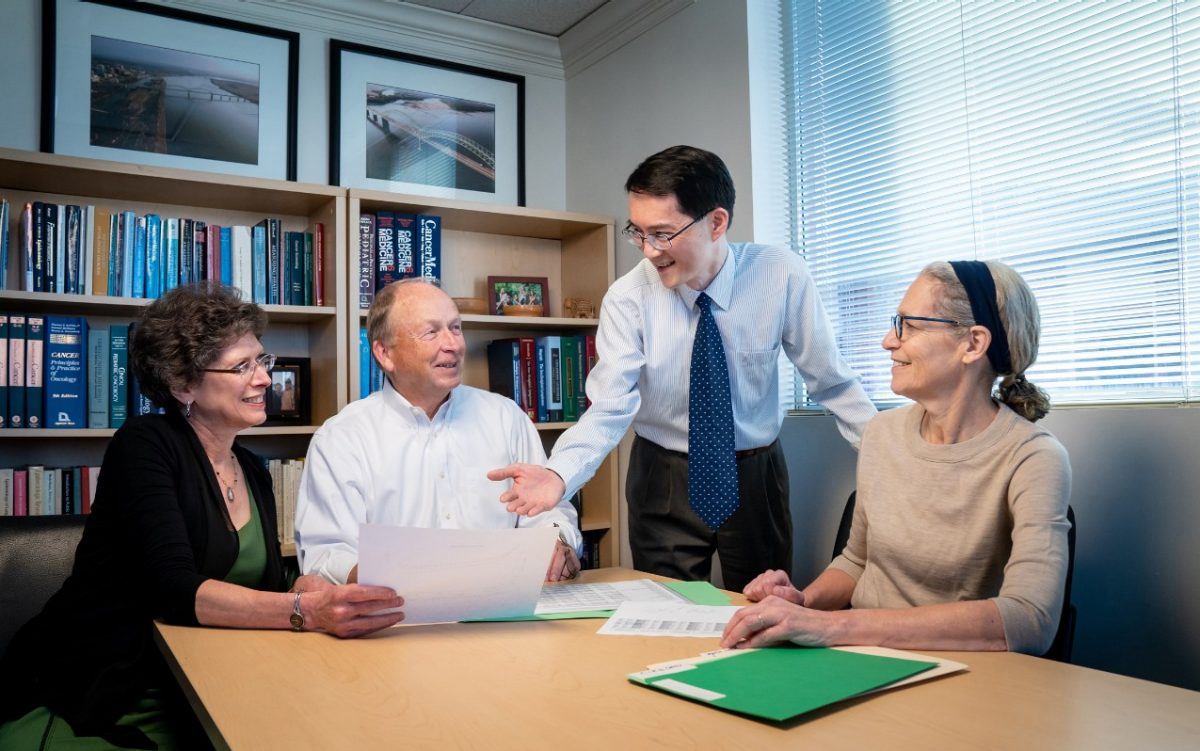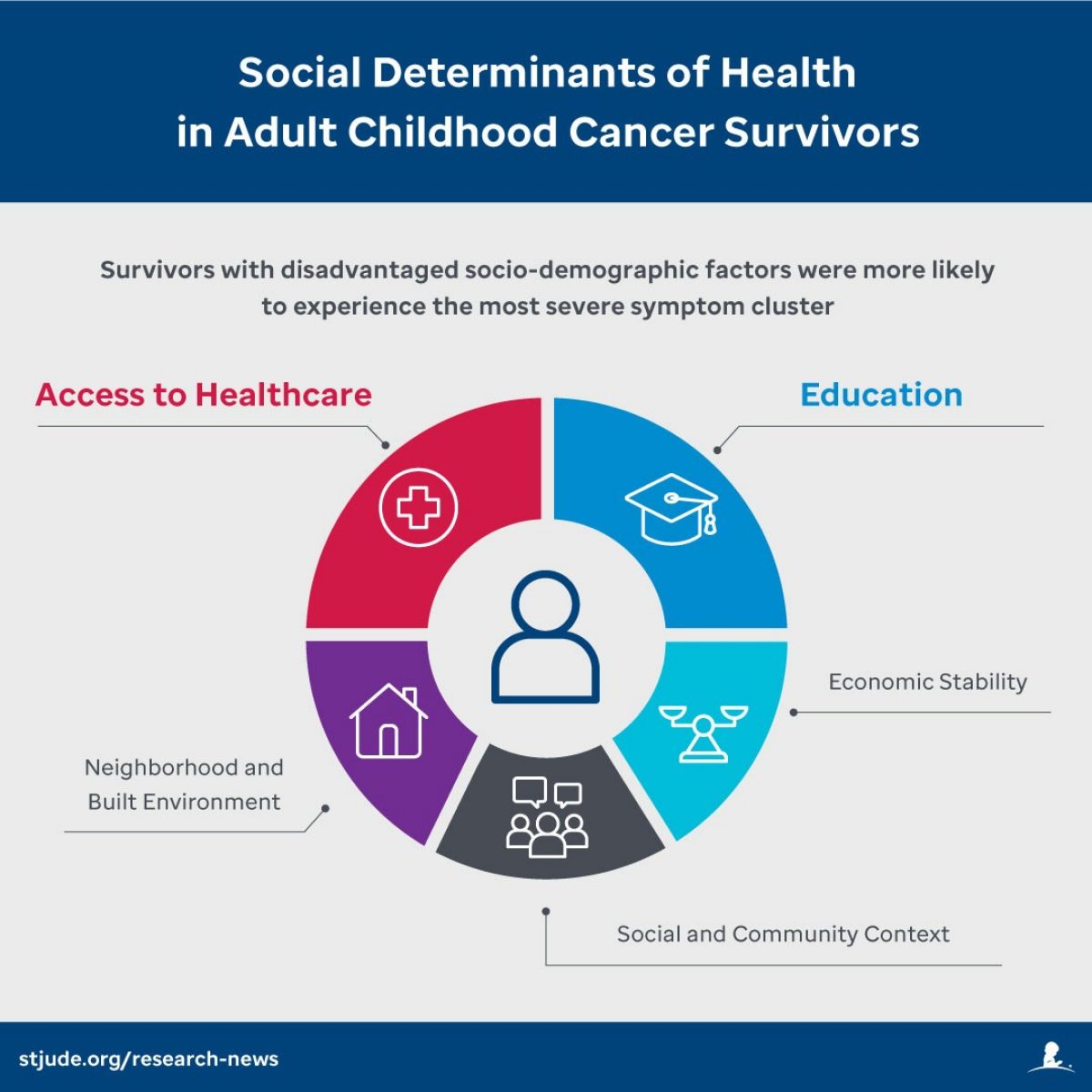
Corresponding author I-Chan Huang, Ph.D., St. Jude Department of Epidemiology and Cancer Control.
Childhood cancer survivors who experience health equity issues, such as a lack of health insurance or education, are also more likely to have a higher burden of severe symptoms as adults. The study from scientists at St. Jude Children's Research Hospital also found that nearly half of childhood cancer survivors experience multiple simultaneous symptoms of moderate to severe intensity. The work appears today in the Journal of Clinical Oncology.
"We found a survivor's risk of experiencing severe symptom burden in all three symptom areas, physical, somatic and psychological, was 7.71 times higher if they have less than a high school education," said corresponding author I-Chan Huang, Ph.D., St. Jude Department of Epidemiology and Cancer Control. "Based on previous research we expected trends like this, but the magnitude was beyond our imagination."
All childhood cancer survivors were more likely to experience physical (sensation, movement, cardiac and pulmonary), somatic (pain, fatigue and nausea) and psychological (memory, anxiety and depression) symptoms than the public. But certain characteristics were associated with more severe symptom burden.
In addition to education, the investigation showed an association between a lack of health insurance and the risk of severe symptom burden in all three symptom areas. These survivors had a 1.5-fold higher risk of being in the most severe symptom group. Survivors' sex, relationship status and cancer treatment showed a significant relationship with moderate-to-severe symptom burden.
"I want to emphasize this really is an equity issue," Huang said. "Health care providers need to pay specific attention to this vulnerable population. Survivors with lower educational attainment, without insurance, female and single (including divorced), have a higher risk of experiencing a high symptom burden than their counterparts."
High multi-symptom burden in childhood cancer survivors
Earlier research of childhood cancer survivors focused on single symptoms experienced by survivors, not overall symptom burden. The St. Jude scientists looked at the overall symptom burden of childhood cancer survivors, with multiple symptoms ranging from heart and lung problems to pain, depression, anxiety and memory issues.
The researchers believed that their approach would reveal the true aggregate intensity of multiple symptoms in survivors. The analysis found nearly 50% of survivors had moderate-to-high symptom burden.
While sociodemographic factors were a major determinant of high symptom burden risk, cancer treatment also played a role. Corticosteroids were associated with high symptom burden. Cranial radiation and platinum drugs were also associated with moderate-to-high symptom burden.
Patients with high symptom burden also self-reported low quality of life, matching pervious reports. The investigators confirmed these self-reports by measuring functional physical and neurocognitive performance outcomes. The study was the first to connect self-reported, health-related quality of life with outcomes from objective clinical evaluations in this manner.

Making a difference for survivors
The relatively high symptom burdens these patients experience indicate that health care providers need to learn to better support the specific needs of childhood cancer survivors. This study also presents an opportunity to improve care. The findings suggest that health care providers should consider treatments and sociodemographic features to help identify and design interventions for survivors at risk for intense symptom clusters.
"Childhood cancer survivors have a high prevalence of chronic symptoms that adversely affect their health-related quality of life and daily physical and neurocognitive performance," said co-author Melissa Hudson, M.D., St. Jude Department of Oncology. "The findings of this study can help clinicians to identify at-risk survivors who may benefit from interventions based on sociodemographic and treatment factors associated with common symptom clusters."
A unique cohort leads to childhood cancer survivor insights
The scientists were the first to find the relationships among childhood cancer survivors' multi-symptom burden; sociodemographic factors; and treatment with objective physical, somatic and psychological outcomes. The key to their success was the St. Jude Lifetime Cohort Study (St. Jude LIFE). This study includes thousands of childhood cancer survivors treated at St. Jude who return regularly for health screenings and hundreds of community controls. The researchers were able to give surveys and assessments to an adult subset of this population, then analyzed the data and found the associations between various factors and poor multi-symptom outcomes.
Authors and funding
The study's first author is Hyewon Shin, formerly of St. Jude. The other authors are Nickhill Bhakta, Madeline Horan, Zhaoming Wang, Deokumar Srivastava, Yutaka Yasui, Justin Baker, Leslie Robison, Kirsten Ness and Kevin Krull, all of St. Jude; William Dudley, University of North Carolina Greensboro and Robin Bartlett, University of Alabama.
The study was supported by grants from the National Cancer Institute (U01CA195547, R01CA238368, R01CA258193 and T32CA225590) and ALSAC, the fundraising and awareness organization of St. Jude.
Read the full text of the Journal of Clinical Oncology article:
Journal of Clinical Oncology, published September 27, 2022






